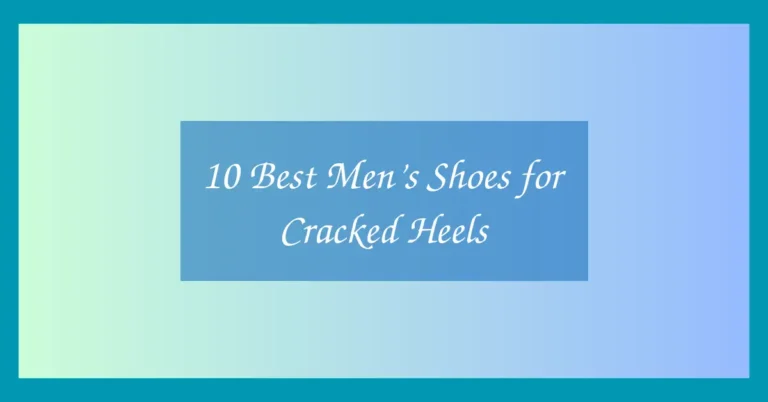10 Best Non Slip Shoes for Food Service
Choosing the best non slip shoes for food service is one of the most important decisions for anyone working in restaurants, cafeterias, or catering environments. The fast-paced nature of food service means floors can quickly become slick from spills, water, or grease, and the wrong footwear can lead to slips, injuries, and lost workdays. A good pair of non slip shoes not only helps prevent accidents but also provides the support and comfort you need for long shifts on your feet. Whether you are a line cook, server, or barista, wearing the right shoes improves your balance, reduces fatigue, and keeps you moving confidently through busy kitchens and dining areas. Selecting the right pair is an investment in your safety, productivity, and overall job performance.
Best Non Slip Shoes for Food Service
Table of Contents
Toggle1. Birkenstock Super-Birki Clog
The Birkenstock Super-Birki is a molded polyurethane clog that has become a benchmark in many kitchens for slip resistance, durability, and overall comfort. On first wear, the Super-Birki feels rigid; the polyurethane is stiff and not as forgiving as leather or fabric uppers. However after a short break-in period, the clog begins to conform slightly, and users report comfort increasing over the first week.
The outsole is designed to resist oil, water, and grease; it grips well on wet tile, stainless steel, and grates, reducing slipping risk under common kitchen hazards. The closed toe protects feet from dropped utensils or spills, though the toe box is somewhat roomy, which is appreciated by those with wider feet. Because the entire upper is one piece of polyurethane, there are no seams to split or stitching to rot from moisture.
There is a raised back to help keep the foot from slipping off while walking, though some users say their heel still lifts a little when walking quickly or stepping up onto shelves.
Breathability is not the strongest point; polyurethane retains heat and traps moisture inside unless socks or moisture-wicking liners are used. The insole is removable and has options like cork-latex, which helps with cushioning and odor control. Cleaning is simple: wipe with a damp cloth or hose off; some people even sanitize them easily.
As they age, the outsole remains effective for many months, but over a year of heavy use the grip may diminish as the ridges flatten. Overall this shoe is ideal for cooks, chefs, and food prep workers who need strong slip resistance, easy cleaning, and rugged performance in greasy, wet conditions.
It is less ideal if you need maximum breathability or have very narrow feet. Cost is moderate to high, but many users believe the long life justifies the expense.
Pros
-
Excellent slip and grease resistance thanks to molded one-piece polyurethane construction
-
Closed toe and raised heel back offer protection and some stability
-
Durable; resists water, oils, and heavy kitchen wear
-
Easy to clean and sanitize
-
Removable insoles (e.g. cork-latex) allow odor control and some cushioning
Cons
-
Not very breathable; heat and moisture can build up inside
-
Stiff break-in period; uncomfortable for first few days
-
Heel sometimes lifts during fast walking or stepping up
-
Hefty feel compared to lighter clogs or sneakers
-
May not fit narrow feet well; roomy toe box can feel loose without socks
2. Dansko Professional Clog
The Dansko Professional Clog is a long-standing favorite for many food service professionals. It combines a traditional clog design with modern comfort and slip resistance. The upper is typically crafted from high-quality leather that can be cleaned and conditioned; the leather also resists water splashes reasonably well, though it is not waterproof.
Inside the shoe there is a thick padded instep collar which cushions the top of the foot and reduces rubbing, especially when leaning forward or kneeling. The footbed uses memory foam or another cushioned insert, giving good shock absorption on hard surfaces like kitchen tile or concrete.
The rocker shape of the sole helps smooth transitions when walking, reducing fatigue over long shifts. The outsole is rubber with a tread designed to channel water and grease away; in many tests this outsole achieves good slip resistance even under greasy water or oil film conditions.
One drawback is the break-in time: leather molds to your foot but is rigid initially, and the shoe might feel heavy and stiff during early wear. Some users also report that the shoe is bulky and makes maneuvering tight kitchen space more challenging. Another issue is breathability.
While perforations or lining may help in some models, leather tends to trap heat, so socks with moisture management are recommended. The heel and midfoot support are strong, helping with arch fatigue typical in long hours. The weight is moderate; not as light as clogs made from plastics or synthetics, but many users prefer the stability provided.
Many chefs, servers, and prep staff point out that the comfort during long shifts outweighs the bulkiness. The leather upper also offers professional appearance, which matters when you’re front of house.
Pros
-
Solid arch and heel support for long standing hours
-
Slip resistant outsole with a tread pattern that handles grease and wet surfaces well
-
Leather upper with good durability and professional look
-
Padded instep collar reduces rubbing and blisters
-
Memory foam or cushioned insole absorbs shock
Cons
-
Lengthy break-in time; initially rigid and heavy
-
Bulkier than lightweight clogs or trainers, can feel cumbersome in tight spaces
-
Poor ventilation; heat buildup inside shoe
-
Higher cost compared to budget models
-
Not ideal for those needing wide or extra narrow sizes
3. Crocs Bistro Clog
The Crocs Bistro Clog is designed specifically for food service workers needing easy-clean, lightweight, and slip resistant footwear. Made from Croslite or a similar proprietary foam material, it is much lighter than leather or full polyurethane clogs. This contributes to reduced leg fatigue over long hours.
The slip-resistant outsole has been tested to handle wet floors and some oil; while it does not rival the most aggressive treaded rubbers, it performs well in standard restaurant settings. The closed toe protects against spills and dropped items. A heel strap is included to help stabilize the foot during walking or carrying trays, though some users say the strap tends to wear at the rivet over long use.
Cleaning this clog is nearly effortless: rinse, wipe, or even pressure spray; the foam resists water infiltration and dries quickly. Odor control is okay provided you remove the strap occasionally and clean under it. The toe box is relatively roomy; users report comfort immediately, though the lack of leather or heavy lining means less structure and support.
For people with arch problems or who need strong support, the Bistro may need aftermarket insoles. Grip is solid on tile and wood, but on heavily greased stainless surfaces its performance drops relative to top-tier polyurethane or rubber models. Breathability is decent because of the foam: air passes more freely, and heat buildup is less than leather clogs.
Cushioning is good for foam, though compresses over time with continuous heavy shifts. Overall the Crocs Bistro is ideal for front-line staff who need lightweight, washable, slip-resistant protection and don’t need maximal structure. It is less suitable if you require heavy arch support or will be in extremely harsh or greasy back-of-house conditions.
Pros
-
Very lightweight; reduces fatigue
-
Excellent ease of cleaning and fast drying
-
Good slip resistance in common wet/greasy floor scenarios
-
Closed toe and heel strap offer protection and stability
-
Affordable compared to high-end clogs and leather shoes
Cons
-
Less arch support; may need added inserts for those with foot issues
-
Foam may compress over time, reducing cushioning
-
Strap hardware (rivet) may weaken or break under continuous use
-
Grip weaker under extreme grease or oil compared to high-grade rubber or polyurethane soles
-
Less formal/professional appearance front of house
4. Skechers Sure Track / Skechers Work line (Slip Resistant)
Skechers’ Work / Sure Track line of non slip footwear provides a hybrid between sport sneaker comfort and work-shoe protection. These shoes typically use leather or reinforced synthetic uppers combined with mesh or perforated panels for breathability. The insoles often use memory foam or cushioned foam topped with moisture-wicking lining. The outsole is rubber, with deep grooves and siped treads for slip resistance under wet and oily surfaces.
In use, the shoe handles walking long distances, standing, and climbing stairs fairly well without discomfort. The weight is moderate; heavier than a Crocs Bistro clog, lighter than full leather boots. Because of the sneaker-like design, they feel more familiar to those used to athletic shoes.
One strong point is that these shoes often fit more securely: laces or straps hold the foot firmly, reducing risk of sliding inside the shoe and blisters. Ventilation helps, especially where mesh is used. The downside is that synthetic reinforcements and leather make cleaning more involved: soap and water, careful drying. Exposed stitching may absorb moisture if not cared for. Also, durability of the outsole and upper depends heavily on workload; heavy grease exposure or constant immersion will degrade materials faster than in clogs.
Some users also find that the shoe bottoms wear down unevenly if walk-patterns are always the same. Another issue is cost: work shoes of this type are more expensive than basic clogs. For front or back of house staff who do a lot of walking, lifting, or need lace-up security, these provide a good balance of grip, support, and fairly reasonable break-in. For those mostly stationed or needing easy slip-ons, these may feel overbuilt.
Pros
-
Secure fit via laces or straps; less risk of looseness
-
Better breathability than full clogs; mesh or perforations aid air flow
-
Good cushioning and arch support in many models
-
Strong slip resistance from patterned rubber outsoles
-
More “sneaker style” comfort and familiarity
Cons
-
Heavier and bulkier than open/clog-style options
-
More complex cleaning; more seams and materials to care for
-
Outsole tread can flatten with heavy or uneven use
-
Higher price than basic clogs or foam models
-
Some designs less water resistant; leather portions may soak up spills
5. Birkenstock Profi-Birki / Birki Polyurethane Professional Clog
The Birkenstock Profi-Birki (often called “Birki” clog) is a full polyurethane clog designed for professional kitchens. Similar in some respects to the Super-Birki, this model emphasizes oil and grease resistance, slip resistance, and easy sanitation, while also offering functional comfort for long hours. At first blush, the shoe feels rigid and has a “plastic” stiffness; it takes several wears for the shoe to loosen up and mold more comfortably around the foot.
The toe box is wide and rounded, allowing room even with socks, which helps for those with bunions or wider feet. The outsole is aggressive in its grip; many chefs find it reliable on wet tiles and greasy steel racks, reducing slips even under demanding back-of-house conditions. The raised back keeps the heel more secure than strapless clogs though some heel lift occurs when ascending stairs.
Breathability again is a concern: closed polyurethane traps heat and sweat, so good socks and regular cleaning of the inner footbed are necessary to minimize odor. The removable insert (when present) helps with moisture wicking. The shoe is easy to hose off, wash, and disinfect; some users report using strong cleaners without damaging the shell. Durability is strong: even after months of exposure to hot oil splashes, heavy foot traffic, and cleaning agents, the shell holds up well.
Flexibility underfoot is low, so walking long distances or standing on hard floor for many hours can become uncomfortable unless the insert is cushioned. Weight is moderate; heavier than lightweight foam options but lighter than work boots. Overall a go-to for chefs, dishwashers, and other high-demand staff needing rugged protection, slip control, and simple cleaning. Less ideal for those needing lightweight breathability or stylish options for front-of-house.
Pros
-
Outstanding grip on wet, oily, and greasy surfaces with aggressive tread design
-
Fully washable shell; easy to disinfect and clean
-
Wide toe box and roomy fit; comfortable for diverse foot shapes
-
Durable under heavy usage and exposure to harsh cleaning chemicals
-
Raised heel back adds some stability
Cons
-
Low breathability; heat and moisture build up inside during long shifts
-
Rigid at first; requires break in to avoid discomfort
-
Less structure or polish for front-of-house presentation
-
Slight heel lift for some users when walking briskly
-
Bulkier feel compared to minimalist or lightweight designs
6. Snibbs The Clog
The Snibbs The Clog is a vegan leather kitchen clog designed for comfort, durability, and slip resistance. From first wearing, the roomy toe box impresses: it gives toes space to splay naturally, reducing cramping during long shifts. The upper material is water resistant and fairly easy to clean; spill-ups wipe off; occasional deeper cleaning works without harming shape.
The outsole uses a rubber compound with tread patterns that shed water and grease well; slipping risk is low on tile and painted floors. Inside is a dual-density insole that cushions well; the softer top layer gives relief under the metatarsals, the firmer layer below adds arch support so standing hours are less punishing.
Break-in time is minimal thanks to the synthetic upper: little stiff-spots or rubbing, compared to many leather clogs. Weight is moderate: heavier than foam clogs but far lighter than leather work boots. Breathability is average: the upper doesn’t have many perforations, so socks with moisture wicking help.
The heel back is closed and solid; you feel secure walking downstairs or carrying trays. Odor control is acceptable: with the dual density footbed removable and air drying, smells don’t build up badly.
Where it lacks a bit is in aggressive environments: extreme grease slicks or stainless steel walkways with heavy oil film can challenge its grip more than higher-grade polyurethane or high traction rubber. Also, side-to-side stability is decent but not exceptional for people who twist frequently or pivot sharply. Nonetheless for many kitchen staff, servers, or line cooks, it hits a sweet spot: non slip, comparatively lightweight, comfortable, fairly easy to clean, and durable.
It may not look dressy enough for front-of-house in restaurants with strict uniform expectations, but for back-of-house or casual service, it works well. Many users report that with proper socks and occasional footbed replacement it serves them well over many months.
Pros
-
Spacious toe box helps reduce foot fatigue
-
Dual-density removable insole for good cushioning and arch support
-
Turf-style rubber tread handles wet and greasy surfaces fairly well
-
Water resistant upper; easy to clean and maintain
-
Closed back design adds stability
Cons
-
Less grip under extreme grease or oiling compared to specialized slip-rubber clogs
-
Average breathability; can feel warm during long or hot shifts
-
May not satisfy formal appearance standards for front-of-house roles
-
Side stability under pivoting or twisting motions not top tier
-
Some users may need to replace footbed for freshness over time
7. Keen Utility Manage Slip-Resistant Work Shoe / Keen Oxfords
The Keen Utility or Keen Oxford line of slip-resistant work shoes blends athletic shoe style with serious non-slip performance. These shoes typically have leather or synthetic uppers with overlays that protect the sides and toes, yet offer flexibility in forefoot for walking.
The lacing system is secure: you can tighten it to prevent heel slippage, which matters especially when carrying trays or moving fast. The outsole is a sticky rubber compound, often with siped (fine zigzag) grooves to increase edges that grip oily and wet surfaces. In many user reports the grip is reliable on wet concrete, tile, and steel grate surfaces; you don’t feel sliding when stepping on puddles.
Cushioning is more advanced than many clogs: midsoles often have EVA foam, shock-absorbing heel pads, and sometimes gel inserts. This helps reduce impact on knees; over 10-hour shifts you notice less fatigue. Breathability is good especially where mesh or perforated leather is used; airflow prevents excessive sweating.
The toe cap protection is moderate: not steel-toe but reinforced enough for food service hazards like ware or dropped pans. Cleaning demands some care: leather needs conditioning, synthetic parts need wiping; seams can collect debris or grease.
One drawback is that weight is higher than simple clogs or foam shoes. Also break-in can take a few days; tightness across upper leather overlays may press at first. These shoes are not as water-proof as full polyurethane shells; deep puddles may soak leather unless treated.
Appearance is more sporty than classic clogs so may not align with uniform policies in some restaurants. For people needing ankle mobility, these shoes may feel slightly limiting under the collar or overlays. But overall, Keen slips-resistant models are excellent for roles involving lots of walking, carrying loads, frequent changes in floor condition, or a mix of duties front and back of house.
Pros
-
Strong secure fit via laces, reducing heel slippage
-
Good grip on various wet/greasy surfaces thanks to sticky rubber and siped tread
-
Enhanced cushioning, heel pads reduce fatigue over long hours
-
Better breathability where mesh or perforations are included
-
Moderate toe protection under everyday hazards
Cons
-
Heavier than lightweight clogs or foam options
-
Requires break-in; upper overlays may rub at first
-
Not fully waterproof; leather/synthetic may absorb water in deep wet conditions
-
More complex cleaning and maintenance required
-
Sporty look may not suit more formal uniform policies
8. Genuine Grip / Mozo / Anywear Slip-Resistant Work Shoe
Genuine Grip (and similar brands like Mozo, Anywear) offer slip-resistant work shoes targeting front and back of house staff. They present more shoe styles (athletic type or casual look) rather than just clogs. The uppers are often full grain leather, treated synthetics, or blends engineered for durability and easy cleaning.
Outsoles are rubber with slip resistance ratings; many have multi-directional treads to deal with slip hazards common in food service. In many comparative user tests, these shoes perform well on grease, soap, water splashes; the difference comes in how quickly they recover grip after heavy soiling or oil film.
Comfort features include thick cushioned insoles, often removable so you can add orthotic inserts if needed. Heel counters tend to be firm, helping prevent heel fatigue. Breathability is mixed: shoes with perforations or mesh perform better; those fully leather need better socks.
Weight is moderate to heavy depending on style. Cleaning is more involved: leather needs conditioning, seams must be scrubbed, insoles cleaned or replaced periodically.
They are also more stylish in appearance in many models; some are suitable photogenically and for front-of-house staff who want uniform compliance plus better looking footwear. One issue is that soles may flatten sooner in extreme areas (e.g. frequently wet greasy concrete), reducing slip grip.
Also arch support in some models is basic; individuals with flat feet may need aftermarket insoles. Overall these brands offer good middle ground: more stylish, sufficient non slip, decent comfort, but some trade-offs in weight or maintenance.
Pros
-
Variety of styles (athletic, casual) that look more formal or polished
-
Good non slip grip under many wet and greasy housekeeping conditions
-
Cushioning and removable insoles allow better fit and support customization
-
Taller heel counters for stability
-
Often more stylish, better for front-of-house roles
Cons
-
Less effective in extreme grease or heavy-oil surfaces; grip reduces after sole wear
-
Leather and seams require more maintenance and care
-
Some models heavy; fatigue may set in
-
Insoles may compress or wear out, requiring replacement
-
Breathability depends heavily on design; full leather versions trap heat
9. Mozo Slip-Resistant Kitchen Sneaker / Mise The Standard (Leather Shoe)
Mise The Standard is a shoe made for chefs who prefer sneaker-style leather shoes instead of clogs. The design combines a strong leather upper with rubber non slip outsole and extra midsole cushioning. First impressions are good: more flexibility near the fore-foot so walking and pivoting feels more natural.
It also keeps a dressier look which can work for those transitioning between kitchen and front-of-house areas. The slip resistance is solid: during rainy, oily, or soapy spills it holds footing better than sneakers without slip ratings. The leather upper is high-quality, and though heavier than foam or synthetic, it molds in over time, improving comfort.
The shoe includes a substantial insole with support; many users say that after a few hours standing they still feel less fatigue in arches and heels compared to cheaper models. Breathability is average: the leather resists moisture somewhat but lacks open mesh so heat builds up with very sweaty work.
Cleaning requires leather care: wiping, using appropriate cleaners, occasional conditioning. Sole edges tend to pick up food debris or grease, so more detailed cleaning is needed.
Drawbacks include cost: these shoes tend to be priced higher due to premium materials and craftsmanship. Also break-in can take longer; initial stiffness may bother some. For workers primarily doing repeated tasks on hard surfaces without big walking distances, the extra cost may not yield proportional benefits.
But for those split between kitchen and serving, or who prefer a more conventional shoe shape, this offers excellent balance of protection, grip, comfort, and appearance. Many chefs in tests rate it high for all-day wear, especially when alternating pairs to allow drying and avoid odor or moisture buildup.
Pros
-
Leather upper gives better formal appearance and improves with wear
-
Sneaker-like flexibility especially near fore-foot for easier movement
-
Strong non slip outsole holds well over varied slippery conditions
-
Good cushioning, better arch support than minimal clogs
-
Great for mixed duty roles (front and back of house)
Cons
-
Higher cost than basic clogs or synthetic foam shoes
-
Longer break-in period; initial stiffness for some users
-
Less breathability in heavy heat unless breaks/ventilation provided
-
Leather requires more maintenance (cleaning, conditioning)
-
Sole edges/troughs collect debris; need regular cleaning
10. SR Max / Shoes For Crews Heavy Duty Non Slip Work Boot
The SR Max or Shoes For Crews heavy duty non slip work boot is built for those in food service with high exposure: dishwashers, back of house cooks, delivery staff, etc. It is designed more like a work boot: high collar (ankle coverage), thick reinforced toe area, strong sole pattern for grip, waterproof or highly water-resistant materials.
On first try, the boot feels a bit bulky and heavy; there is padding in collar and tongue to reduce pressure points. The outsole is a rugged rubber compound with aggressive tread and wide channels to displace water, soap, grease; even under heavy soiling it performs better than smoother soles.
Support is strong: firm heel counter, good arch support, solid midsole that resists compression. Cushioning is robust; some boots include dual density footbeds. However the heaviness of the boot means more energy is spent lifting each foot, which can fatigue legs over long walking or standing when compared to lighter shoes.
Breathability is limited; boots by design trap more heat, and unless the lining is highly moisture-wicking or the boot has ventilation, feet may sweat more.
Cleaning is more involved: waterproofing treatments, cleaning seams, drying thoroughly to avoid mildew. Also, you may need to break them in: stiff toe box or thick sole can cause blisters early on.
Visibility under dress code may be acceptable depending on uniform but boots are more noticeable and less sleek. For very heavy duty roles with risk of impact, wet floors, chemicals or grease, this boot is a strong candidate. For lighter roles front of house, it may be overkill.
Pros
-
Excellent grip and traction even under heavily soiled, greasy floor conditions
-
High protection of ankle and toe areas; reinforced build
-
Good arch support and strong durable construction
-
Waterproof or highly water-resistant materials for protection in wet work zones
-
Robust cushioning helps with shock absorption
Cons
-
Heavy; can fatigue legs faster
-
Lower breathability; heat buildup in boot design
-
Bulky; restricts ankle mobility and speed in some roles
-
Longer break-in period; potential for blisters early on
-
More maintenance needed (waterproofing, cleaning, drying)
Buyer’s Guide
When choosing the best non slip shoes for food service, there are several key factors to consider to ensure they perform well in demanding conditions. Each factor plays a role in keeping you safe, comfortable, and productive during long shifts.
Durability
Durability is crucial because food service workers spend hours on their feet and frequently move between wet and dry surfaces. Look for shoes made with strong, water-resistant materials such as treated leather or high-grade synthetic uppers. Reinforced stitching and slip-resistant rubber outsoles can extend the lifespan of the shoes, reducing the need for frequent replacements. Investing in durable footwear saves money over time and ensures consistent performance throughout months of use.
Grip
The most important feature of non slip shoes is their grip. The outsole should have a tread pattern designed to channel away liquid and maintain friction even on greasy surfaces. Look for shoes that meet industry slip-resistance standards and have rubber compounds that stay flexible in both wet and dry conditions. Deep, multidirectional grooves provide better traction and minimize the risk of slipping, helping you stay safe during peak rush hours.
Comfort
Comfort is essential when you are standing or walking for eight to twelve hours a day. Choose shoes with cushioned midsoles that absorb shock, supportive insoles that prevent arch fatigue, and padded collars that reduce ankle strain. Lightweight designs can make a big difference, helping you stay agile and preventing sore feet after a long shift. Comfort-focused shoes also reduce the risk of knee, hip, and back pain over time.
Material and Breathability
Materials affect not only durability but also how comfortable the shoes are in hot kitchens. Breathable mesh panels or moisture-wicking linings help keep your feet dry and reduce odor buildup. Shoes with water-resistant coatings prevent liquids from soaking in, which keeps you cleaner and helps maintain hygiene standards. Easy-to-clean materials are also ideal since food service environments often require quick wipe-downs to maintain a professional appearance.
Fit and Support
Shoes should fit securely without pinching or sliding. A snug but not overly tight fit provides stability and prevents blisters. Good arch support and a contoured footbed help distribute weight evenly, which is essential for preventing foot strain over time. Some shoes also feature removable insoles, allowing you to add custom orthotics for extra support.
By prioritizing these factors, you can find non slip shoes that enhance both safety and comfort, allowing you to focus on delivering excellent service without worrying about your footing.
FAQ
What makes a shoe truly non slip for food service?
A shoe is considered non slip when its outsole is made from a slip-resistant rubber compound and designed with tread patterns that channel away liquids. These shoes are tested on wet and greasy surfaces to ensure they maintain friction and minimize the risk of slipping.
How often should I replace my non slip shoes?
Replacement frequency depends on how many hours you work each week, but most food service professionals should replace their shoes every six to twelve months. Worn-out treads lose their effectiveness, which increases the risk of slipping, so inspect the soles regularly for flattening or smooth spots.
Are clogs a good option for food service workers?
Yes, clogs can be a good choice if they are specifically designed for slip resistance and have adequate heel support. They are easy to clean and allow quick on-and-off, but be sure they fit securely to prevent tripping or sliding when moving quickly.
Do I need water-resistant shoes for food service work?
Water-resistant shoes are highly recommended because spills are common in kitchens and dining areas. Shoes that repel liquids help keep your feet dry, prevent discomfort, and are easier to clean, which helps maintain hygiene during busy shifts.
What type of cushioning is best for long shifts?
Memory foam or EVA cushioned midsoles are excellent choices for absorbing impact during long hours on your feet. Look for shoes that combine cushioning with firm arch support to maintain proper posture and reduce fatigue.
Can I use running shoes instead of designated work shoes?
While some running shoes may provide decent comfort, they are not usually designed for oil- and grease-resistant surfaces. Dedicated work shoes undergo slip-resistance testing, making them a safer option for kitchen and food service environments.
What should I avoid when buying shoes for food service?
Avoid shoes with smooth soles, as they provide very little traction. Stay away from overly soft materials that soak up spills, as they can lead to odor buildup and quick deterioration. Also, avoid shoes that feel too loose or too tight, since poor fit increases the risk of blisters and discomfort.
Conclusion
Choosing proper non slip footwear in food service is more than comfort it is essential for safety and long-term job performance. Selecting shoes that combine excellent grip, durable materials, supportive fit, and ease of cleaning can protect you from slips, fatigue, and injury. Invest in quality, know your work demands, and prioritize safety over style for best results.







